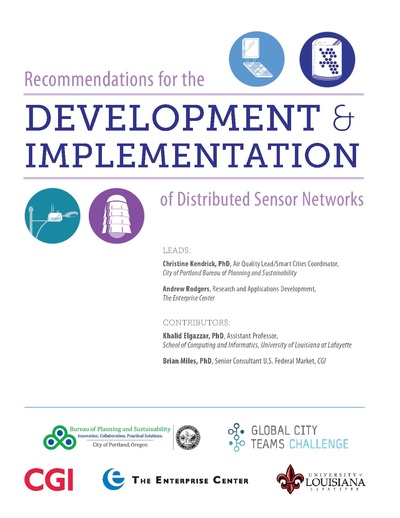Sensor Technology: Difference between revisions
No edit summary |
No edit summary |
||
| Line 7: | Line 7: | ||
| document = TransportationBlueprintFeb18.pdf | | document = TransportationBlueprintFeb18.pdf | ||
| chapter = 5009 | | chapter = 5009 | ||
| image = | | image = SensorChapter.jpg | ||
| summary = | | summary = We define a smart city as one that has purpose (sustainability, equity, traffic safety) to its planning and measures results of its actions towards | ||
We define a smart city as one that has purpose (sustainability, equity, traffic safety) to its planning and measures results of its actions towards | |||
achieving that purpose. For this reason we consider three elements fundamental to a smart city: (1) A planning process based on a deep understanding | achieving that purpose. For this reason we consider three elements fundamental to a smart city: (1) A planning process based on a deep understanding | ||
of the needs of the community, (2) A set of metrics to measure progress, and (3) A data platform to enable data collection and measurement against | of the needs of the community, (2) A set of metrics to measure progress, and (3) A data platform to enable data collection and measurement against | ||
metrics. A smart city is therefore a dynamic city that makes living in a dense urban environment more civil and more rewarding. A smart city is not | metrics. A smart city is therefore a dynamic city that makes living in a dense urban environment more civil and more rewarding. | ||
}} | |||
A smart city is not | |||
only attractive to people who live there, but to people who visit and companies doing business there. As already explained, we consider a data platform | only attractive to people who live there, but to people who visit and companies doing business there. As already explained, we consider a data platform | ||
to enable data collection and measurement against planning metrics to be fundamental to a smart city. The goal is to make decisions based on data. | to enable data collection and measurement against planning metrics to be fundamental to a smart city. The goal is to make decisions based on data. | ||
Revision as of 16:42, March 16, 2022
| Transportation | ||||||||||||||||
|---|---|---|---|---|---|---|---|---|---|---|---|---|---|---|---|---|

| ||||||||||||||||
| Sectors | Utility Transportation Data | |||||||||||||||
| Contact | Wilfred Pinfold | |||||||||||||||
| Topics |
| |||||||||||||||
Activities
Press
| ||||||||||||||||
- Authors
We define a smart city as one that has purpose (sustainability, equity, traffic safety) to its planning and measures results of its actions towards achieving that purpose. For this reason we consider three elements fundamental to a smart city: (1) A planning process based on a deep understanding of the needs of the community, (2) A set of metrics to measure progress, and (3) A data platform to enable data collection and measurement against metrics. A smart city is therefore a dynamic city that makes living in a dense urban environment more civil and more rewarding.
A smart city is not
only attractive to people who live there, but to people who visit and companies doing business there. As already explained, we consider a data platform to enable data collection and measurement against planning metrics to be fundamental to a smart city. The goal is to make decisions based on data. Such a platform would enable a real time response to demand, events and emergencies. It would allow planners to make sure the city’s budget is used as effectively and efficiently as possible to meet the city's goals. This represents one way that cities can break down silos and use data intelligently so that government operates as a true enterprise, rather than as a series of loosely linked departments and agencies.
Through greater data availability citizens can be better engaged, and system managers can see further and more holistically.















